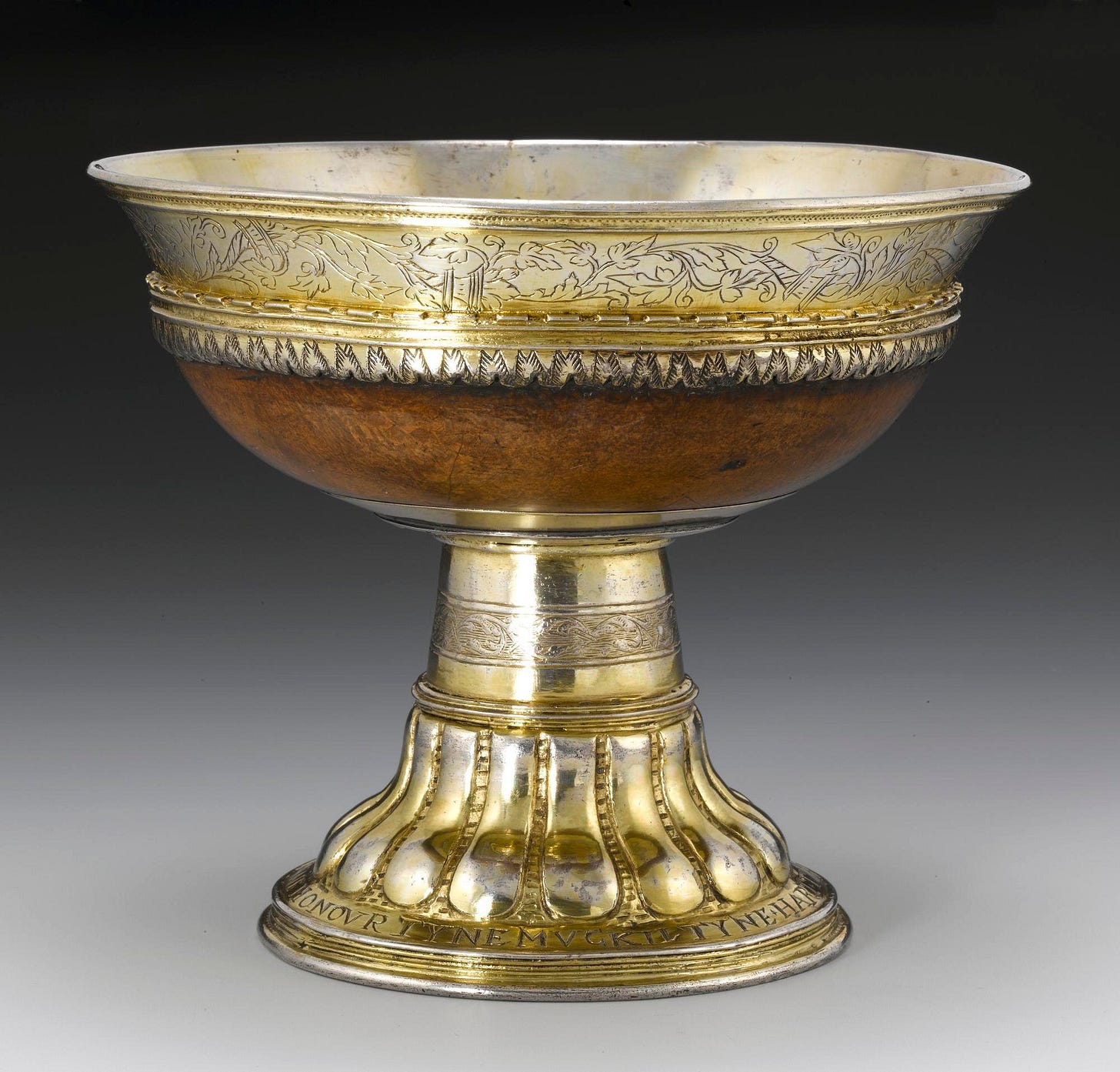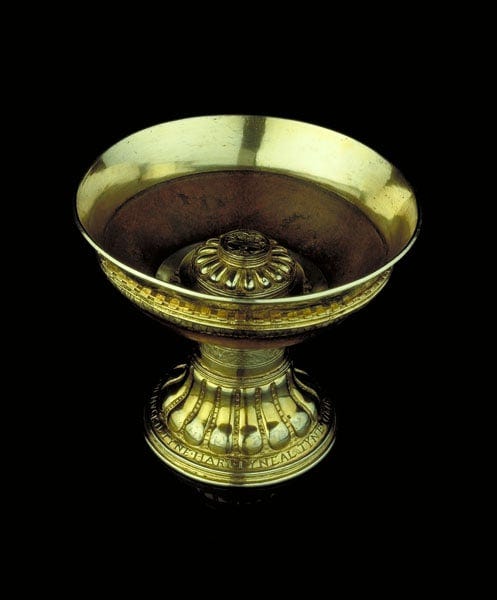The Watson Mazer
Medieval communal drinking cup believed to have belonged to the ancestors of the last Chief of Clan Watson.
As part of the research in to the Watsons of Saughton over at The Clan Watson Society, I came across reference to "The Watson Mazer". Neither myself, Shane or Kev had ever heard of this so it warranted a bit of digging on my part.
What is a Mazer?
A mazer is a medieval communal drinking cup. They’re designed to be passed around at feasts to symbolically emphasise either a specific arrangement between the individuals drinking from it or a more general bond of friendship. Bearing in mind that friendship in medieval times was a much more formal affair.
Mazers are usually made of hardwood, wide and shallow, with some ornamentation; and there are multiple examples of these in Scotland with the Bute Mazer being the most commonly referred to as the oldest example in Scotland and its connection with King of Scots Robert the Bruce.
The Watson Mazer, however, is constructed of a maplewood bowl with a silver-gilt band, resting on a silver stem and an inscribed trumpet-shaped foot. It's the earliest in the sequence of Scottish Standing mazers, and stylistically quite unique. It's therefore a pretty important piece and currently on display in the Silver Treasury, level 5 of the Scotland Galleries in Edinburgh.
How old is The Watson Mazer?
It’s attributed very tentatively to goldsmith Adam Leys of Edinburgh, based on a possible makers mark and created c.1540/50. This puts it at the end of the reign of King James V of Scotland and the beginning of that of his infant daughter Mary, Queen of Scots as well as being contemporary with creation of the Scottish Crown and Sceptre.
Who did The Watson Mazer belong to?
According to the National Museum of Scotland has a providence of belonging to the Watsons of Saughton based on the coat of arms that features on the print in the middle of the mazer along with the initials 'D V' for David Watson of Saughton.

What is interesting about this, is that the earliest David Watson of Saughton (that we know of) didn't come along until 1637, almost 100 years after the mazer was supposedly created and he didn't matriculate arms until the June of 1673.

Spectrographic analysis of the various parts confirms its attribution to c.1540/1550, and that it was pretty much built as it stands today without being added to or evolved over time. It was significantly damaged at one stage however, and crudely repaired which is why there are some anomalies in it today.
So the mazer was created around the time of either James Watson (2nd of Saughton), Great-Grandfather of David Watson of Saughton or, James Watson (3rd of Saughton) his Grandfather, but is attributed and engraved for David Watson of Saughton.
So this raises a couple of questions...
1. Did David Watson of Saughton (1637-1685) simply buy a 100 year old mazer and have his coat of arms added to it?
2. Was it something that was already in the family and David Watson of Saughton just added more detail to it?
3. Or is there a David Watson of Saughton further back in the line we do not know about?
Work is ongoing with this.
What details are there on The Watson Mazer?
On the foot of mazer is the inscription "TYNE GEIR TYNE LITIL TYNE HONOVR TYNE MUCKIL TYNE HART TYNE AL" beautifully translating to "Lost wealth lost little, lost honour much lost, lost heart lost all".
Twice on the rim of The Watson Mazer is a fleur-de-li inscribed on the silver band. The significance of this is unknown, however apparently it is rare for this time and one of the only other examples like it in Scotland is on the The Silver Seal-Case of the Earl of Montrose in the early 1600s.
I am indebted to Lyndsay McGill of the National Museum of Scotland who has been very helpful with information requests that has allowed us to look more in to this.





